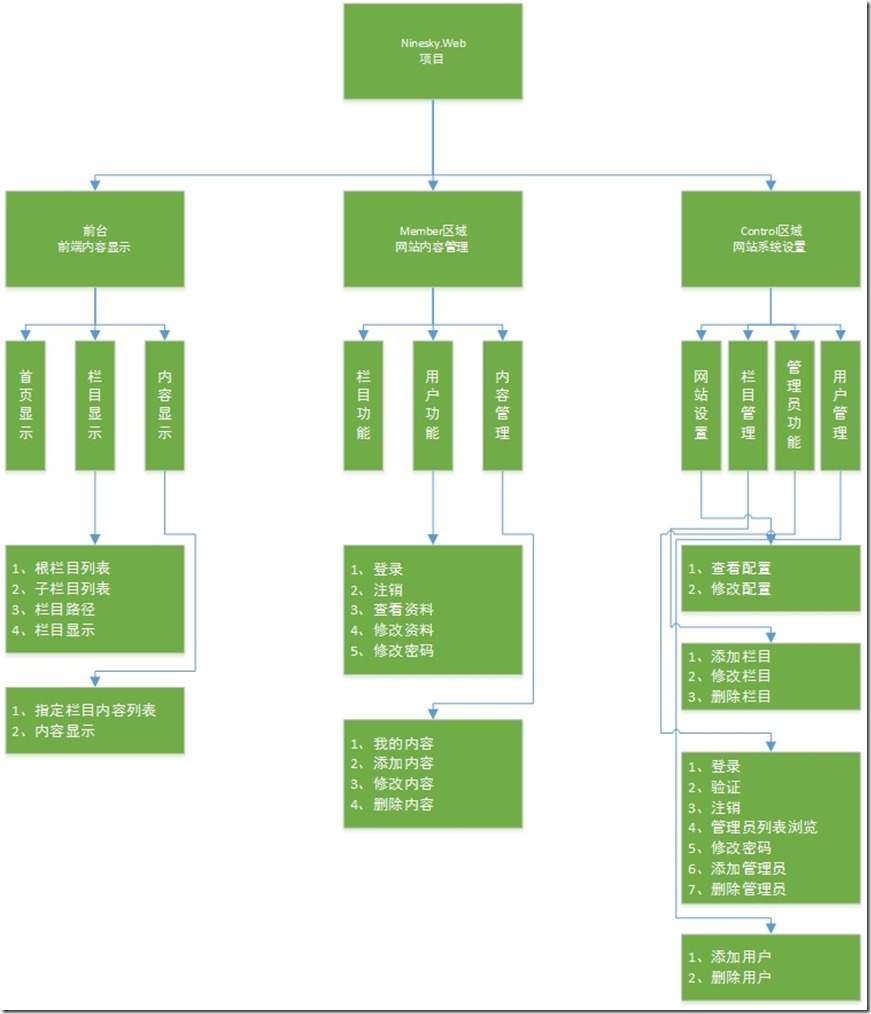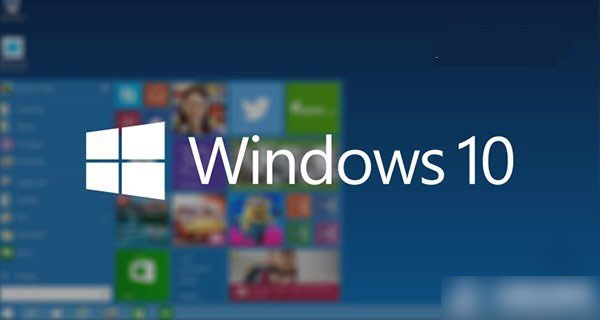为了减少由于单个请求挂掉而拖垮整站的情况发生,给所有请求做统计是一个不错的解决方法,通过观察哪些请求的耗时比较长,我们就可以找到对应的接口、代码、数据表,做有针对性的优化可以提高效率。在asp.net web api中我们可以通过注册一个DelegatingHandler来实现该功能。那在asp.net core中该如何实现呢?
一:比较asp.net web api 和asp.net core的请求管道
观察这两张图,可以发现他们非常的相似,都是管道式的设计,在asp.net web api中,我们可以注册一系列的DelegatingHandler来处理请求上下文HttpRequestMessage,在asp.netcore中,我们可以注册一系列中间件来处理请求上下文,他们两者从功能和意义上是非常相似的,我这里这里不会详细介绍各自的管道是如何的(这样的文章非常多,博客园随处可见),他们都完成了类似中间件的功能,只是在代码设计上有一点区别。
我们先看一段代码,新建一个 asp.net web api 项目,添加几个 DelegatinHandler
然后在 Global 中注册
public class DelegatingHandler1 : DelegatingHandler
{
protected override async Task<HttpResponseMessage> SendAsync(HttpRequestMessage request, CancellationToken cancellationToken)
{
Trace.WriteLine("DelegatingHandler1 HashCode: " + this.GetHashCode());
Trace.WriteLine("DelegatingHandler1 base InnerHandler HashCode: " + base.InnerHandler.GetHashCode());
Trace.WriteLine("DelegatingHandler1 start");
var response = await base.SendAsync(request, cancellationToken);
Trace.WriteLine("DelegatingHandler1 end");
return response;
}
}
public class DelegatingHandler2 : DelegatingHandler
{
protected override async Task<HttpResponseMessage> SendAsync(HttpRequestMessage request, CancellationToken cancellationToken)
{
Trace.WriteLine("DelegatingHandler2 HashCode: " + this.GetHashCode());
Trace.WriteLine("DelegatingHandler2 base InnerHandler HashCode: " + base.InnerHandler.GetHashCode());
Trace.WriteLine("DelegatingHandler2 start");
var response = await base.SendAsync(request, cancellationToken);
Trace.WriteLine("DelegatingHandler2 end");
return response;
}
}
public class DelegatingHandler3 : DelegatingHandler
{
protected override async Task<HttpResponseMessage> SendAsync(HttpRequestMessage request, CancellationToken cancellationToken)
{
Trace.WriteLine("DelegatingHandler3 HashCode: " + this.GetHashCode());
Trace.WriteLine("DelegatingHandler3 base InnerHandler HashCode: " + base.InnerHandler.GetHashCode());
Trace.WriteLine("DelegatingHandler3 start");
var response = await base.SendAsync(request, cancellationToken);
Trace.WriteLine("DelegatingHandler3 end");
return response;
}
}
修改一下 ValuesController
public class WebApiApplication : System.Web.HttpApplication
{
protected void Application_Start()
{
AreaRegistration.RegisterAllAreas();
GlobalConfiguration.Configure(WebApiConfig.Register);
FilterConfig.RegisterGlobalFilters(GlobalFilters.Filters);
RouteConfig.RegisterRoutes(RouteTable.Routes);
BundleConfig.RegisterBundles(BundleTable.Bundles);
GlobalConfiguration.Configuration.MessageHandlers.Add(new DelegatingHandler1());
GlobalConfiguration.Configuration.MessageHandlers.Add(new DelegatingHandler2());
GlobalConfiguration.Configuration.MessageHandlers.Add(new DelegatingHandler3());
}
}
启动后输入路径 /api/values,我们可以在VS的输出栏看到下面这些内容
public class ValuesController : ApiController
{
// GET api/values
public IEnumerable<string> Get()
{
Trace.WriteLine("/api/values");
var handlers = this.RequestContext.Configuration.MessageHandlers;
return new string[] { "value1", "value2" };
}
}
启动后输入路径 /api/values,我们可以在VS 的输出栏看到下面这些内容
DelegatingHandler1 HashCode: 58154627
DelegatingHandler1 base InnerHandler HashCode: 35529478
DelegatingHandler1 start
DelegatingHandler2 HashCode: 35529478
DelegatingHandler2 base InnerHandler HashCode: 47422476
DelegatingHandler2 start
DelegatingHandler3 HashCode: 47422476
DelegatingHandler3 base InnerHandler HashCode: 65273341
DelegatingHandler3 start
/api/values
DelegatingHandler3 end
DelegatingHandler2 end
DelegatingHandler1 end
输出中我们可以看到DelegatingHandler1的 InnerHandler是DelegatingHandler2,以此类推,在DelegatingHandler3的InnerHandler处理请求的时候就转发到了相关控制器,这里和 .netcore中的中间件非常相似,在.netcore 中间件顺序是RequestServicesContainerMiddleware(给请求上下文绑定容器)->AuthenticationMiddleware(认证)-> RouterMiddleware (路由以及MVC)
如果我们在ValuesController中观察表达式this.RequestContext.Configuration.MessageHandlers还可以看到最终处理请求的是一个HttpRoutingDispatcher,最也是是分配到路由以及控制器来处理的,按照如此方式我们可以很容易在asp.netweb api中对请求统计。这里是比较简陋的,对此我们可以记录客户端和服务器更详细的信息,包括IP地址,http状态码,是否是认证用户等等,但是这篇主要是以asp.netcore为主的,所以这里就不详细写下去了。
public class ApplicationInsight : DelegatingHandler
{
protected override async Task<HttpResponseMessage> SendAsync(HttpRequestMessage request, CancellationToken cancellationToken)
{
var stopWatch = new Stopwatch();
stopWatch.Start();
var response = await base.SendAsync(request, cancellationToken);
stopWatch.Stop();
//停止计时器,并记录
}
}
public partial class Startup
{
public void Configuration(IAppBuilder app)
{
GlobalConfiguration.Configuration.MessageHandlers.Add(new ApplicationInsight());
}
}
二:asp.netcore中间件 + NLog 实现请求监控
先看统计结果,start开始时间,time是请求消耗时间(毫秒),authenicate是认证通过的schema,使用 NLog自定义字段也是非常方便的
先说一说遇到的问题
(1)NLog记录一张以上的表如何实现,应为首先会有一个一般性的日志表(称他为log),并且这些统计不对写到log表
(2)使用NLog自定义字段LayoutRenderer没有类似 .net framework中的System.Web.Current
(3)使用UseMiddleware无法在让我们的中间件成为第一个中间件
(4)实现忽略记录的方法,肯定有一些接口是不希望记录的,所以这个也要实现
NLog配置
这里只列出了部分内容,github 地址在最后,数据库是mysql ,apiinsight表示请求统计,log是一般性的日志,debughelper可以加快我们调试时日志的检索速度
<targets>
<!--黑洞 忽略的日志-->
<target xsi:type="Null"
name="blackhole" />
<!--文件日志-->
<target xsi:type="File"
name="debughelper"
fileName="${var:root}\Logs\debug_helper.log"
layout="${longdate}|${event-properties:item=EventId.Id}|${logger}|${uppercase:${level}}|${message} ${exception}" />
<!--apiinsight api 统计-->
<target name="apiinsight" xsi:type="Database"
dbProvider="MySql.Data.MySqlClient.MySqlConnection, MySql.Data"
connectionString="${var:connectionString}"
>
</target>
<!--日志-->
<target name="log" xsi:type="Database"
dbProvider="MySql.Data.MySqlClient.MySqlConnection, MySql.Data"
connectionString="${var:connectionString}"
>
</target>
</targets>
在Startup中
public void Configure(IApplicationBuilder app, IHostingEnvironment env)
{
//省略了其他配置
//全局的 HttpContext
app.UseGlobalHttpContext();
//省略了其他配置
LogManager.Configuration = new XmlLoggingConfiguration(Path.Combine(env.ContentRootPath, "nlog.config"));
LogManager.Configuration.Variables["root"] = env.ContentRootPath;
LogManager.Configuration.Variables["connectionString"] = Configuration.GetConnectionString("DefaultConnection");
}
自定义字段都是通过LayoutRenderer实现,由于自定义字段有很多,这里只列出了一个开始时间是如何查询的,这个时间是在我们注册的第一个中间件执行 Invoke方法的时候写进HttpContext.Items的
[LayoutRenderer("apiinsight-start")]
public class StartApiInsightRenderer : LayoutRenderer
{
protected override void Append(StringBuilder builder, LogEventInfo logEvent)
{
var httpContext = HttpContextProvider.Current;
if (httpContext == null)
{
return;
}
var _apiInsightsKeys = httpContext.RequestServices.GetService<IApiInsightsKeys>();
if (httpContext != null)
{
if (httpContext.Items.TryGetValue(_apiInsightsKeys.StartTimeName, out var start) == true)
{
builder.Append(start.ToString());
}
}
}
}
NLog 规则,很容易理解日志统计只记录Cheers命名空间下的日志
<rules> <!--需要记录的日志--> <logger name="Cheers.*" minlevel="Trace" writeTo="apiinsight" /> <logger name="WebApp.*" minlevel="Info" writeTo="log" /> <logger name="*" minlevel="Trace" maxlevel="Debug" writeTo="debughelper" /> <!--忽略的日志--> <logger name="Microsoft.*" minlevel="Trace" writeTo="blackhole" final="true" /> </rules>
核心 ApiInsightMiddleware中间件
public class ApiInsightMiddleware
{
private readonly RequestDelegate _next;
private readonly IServiceProvider _serverProvider;
private readonly IApiInsightsKeys _apiInsightsKeys;
private readonly ILogger<ApiInsightMiddleware> _logger;
private HttpContext _httpContext;
public ApiInsightMiddleware(RequestDelegate next, IServiceProvider serviceProvider, ILogger<ApiInsightMiddleware> logger)
{
_next = next;
_serverProvider = serviceProvider;
_apiInsightsKeys = _serverProvider.GetService<IApiInsightsKeys>();
_logger = logger;
}
public async Task Invoke(HttpContext httpContext)
{
_httpContext = httpContext;
var flag = SetValues();
await _next(httpContext);
if (flag == true)
{
ApiInsight();
}
}
//省略了其他的代码
}
很好理解,在执行下一个中间件之前调用SetValues开始计时,下一个中间件执行成功开始统计并写入日志(或者忽略不写)。现在他是asp.net coremvc的第一个中间件了,好处就是更符合这个中间件本身的所做的事情了,但是带来的问题就是httpContext.RequestService是 null ,因为RequestService是在RequestServicesContainerMiddleware这个中间件写进去的,在者其实很多地方我们都需要HttpContext ,并且目前微软还没有给我们定义一个静态的HttpContext。
静态的HttpContext
HttpContext是通过单例 IHttpContextAccessor提供的,当HttpContext创建的时候就会赋值给他,当请求到达中间件这个管道的时候,HttpContext就已经存在于IHttpContextAccessor了,并且和Invoke参数列表中的HttpContext是一致的(同一个请求中),问题在于RequestServicesContainerMiddleware这个中间件没有执行就没有容器,并且很多时候我们都要用到容器,所以就模仿源码在这里都加进去了。
public static class HttpContextProvider
{
private static IHttpContextAccessor _accessor;
private static IServiceScopeFactory _serviceScopeFactory;
public static Microsoft.AspNetCore.Http.HttpContext Current
{
get
{
var context = _accessor?.HttpContext;
if (context != null)
{
var replacementFeature = new RequestServicesFeature(_serviceScopeFactory);
context.Features.Set<IServiceProvidersFeature>(replacementFeature);
return context;
}
return null;
}
}
internal static void ConfigureAccessor(IHttpContextAccessor accessor, IServiceScopeFactory serviceScopeFactory)
{
_accessor = accessor;
_serviceScopeFactory = serviceScopeFactory;
}
}
public static class HttpContextExtenstion
{
public static void AddHttpContextAccessor(this IServiceCollection services)
{
services.AddSingleton<IHttpContextAccessor, HttpContextAccessor>();
}
public static IApplicationBuilder UseGlobalHttpContext(this IApplicationBuilder app)
{
var httpContextAccessor = app.ApplicationServices.GetRequiredService<IHttpContextAccessor>();
var serviceScopeFactory = app.ApplicationServices.GetRequiredService<IServiceScopeFactory>();
HttpContextProvider.ConfigureAccessor(httpContextAccessor, serviceScopeFactory);
return app;
}
}
我们只需要在Startup中使用app.UseGlobalHttpContext();就可以在程序的任何地方得到HttpContext和容器了,肯定会有人说为什么不通过构造函数来获取我们想要的注入呢,因为有些第三方框架或这某些地方我们不能使用容器获取服务,比如这里 NLog的自定义字段使用的LayoutRenderer就无法通过构造器得到我们想要的服务。
第一个中间件
在Startup的Configure方法中目前还没发现如何注册第一个中间件,因为Configure方法始终是在IStartupFilter这个接口之后执行的,这也提供了我们让自己的中间件成为第一个中间件的可能。可能这样做并不是特别有必要,甚至是没有意义的,但是实现的过程确实很有意思的。这里在Startup中的方法ConfigureService 注册我们的中间件。
public void ConfigureServices(IServiceCollection services)
{
services.AddApiInsights();
services.AddMvc();
}
具体的
public static class ApiInsightsServiceCollectionExtensions
{
static readonly string stopWatchName = "__stopwatch__";
static readonly string startTimeName = "__start__";
/// <summary>
/// 注册和 API 监控相关的服务,中间件
/// </summary>
/// <param name="services"></param>
public static void AddApiInsights(this IServiceCollection services)
{
services.AddSingleton<IApiInsightsKeys>(
new ApiInsightsKeys(stopWatchName, startTimeName)
);
services.FirstRegister<IStartupFilter, RequestApiInsightBeginStartupFilter>(ServiceCollectionServiceExtensions.AddTransient<IStartupFilter, RequestApiInsightBeginStartupFilter>);
services.AddSingleton<IRequestIsAuthenticate, DefaultRequestIsAuthenticate>();
}
}
这里注册了三个服务
IApiInsightsKeys
定义了存储在HttpContext.Item中的键值对的名称
public interface IApiInsightsKeys
{
string StopWatchName { get; }
string StartTimeName { get; }
}
IRequestIsAuthenticate
/// <summary>
/// 验证请求用户是否已经认证
/// </summary>
public interface IRequestIsAuthenticate
{
/// <summary>
/// 返回已经认证的 scheme
/// </summary>
/// <returns></returns>
Task<string> IsAuthenticateAsync();
/// <summary>
/// 返回已经认证的 用户名
/// </summary>
/// <returns></returns>
Task<string> AuthenticatedUserName();
}
就验证而言可能不同的开发者使用的是不一样的验证方式,可能是基于 Asp.Net CoreAuthentication中间件的认证方式,也可能是其他的比如自定义的token,或者有一个单点登录的服务器,又或者是session,其实 Asp.Net Core的Authentication中间件也可以帮我们实现基于restful的token认证。所以就把它定义出来了,并且默认的实现就是基于Authentication这个中间件的。
IStartupFilter
看到他是一个非常特殊的方式来注册的,自定义的 FirstRegister这个方法,实际上Asp.NetCore内置有多个IStartup这样的服务,并且都是在Startup的Configure之前执行的,所以这里一定要用这个服务来让我们的中间件成为第一个中间件。FirstRegister代码也很容易理解,由于在宿主启动之前,内部注册了多个IStartup,并且最后会按先后顺序配置 IApplicationBuilder,所以我们只能让第一个 StartupFilter 的IApplicationBuilder 就注册我们的中间件,通过改动 ServiceCollection 中服务的顺序可以实现。虽然不是很有必要,但是可以从中观察的 Startup 的 Configure方法 以及 接口StartupFilter (还有 IHostingStartup )的执行顺序。
public class RequestApiInsightBeginStartupFilter : IStartupFilter
{
public Action<IApplicationBuilder> Configure(Action<IApplicationBuilder> next)
{
return builder =>
{
builder.UseMiddleware<RequestApiInsightBeginMiddleware>();
next(builder);
};
}
}
忽略的方法
[AttributeUsage(AttributeTargets.Method, AllowMultiple = false, Inherited = true)]
public class NoInsightAttribute : Attribute
{
}
在 ApiInsight 方法中会调用 IsIgnore 检测该方法是否打了标签NoInsightAttribute,如果是那就忽略该方法,这里建议使用特性路由,原因有两点,第一特性路由不需要使用IActionSelector 接口重新查找匹配的方法,第二,在 restful api 中,结合特性路由和 HttpMethodAttribute 标签可以使方法更简洁,相同的接口名称通过不同的请求方式达到不同的目的
private bool IsIgnore()
{
var actionDescriptor = GetSelectedActionDescriptor() as ControllerActionDescriptor;
if (actionDescriptor == null)
{
return false;
}
else
{
var noInsight = actionDescriptor.MethodInfo.GetCustomAttribute<NoInsightAttribute>();
return noInsight != null;
}
}
程序地址: https://github.com/cheesebar/ApiInsights
本文使用NLog给Asp.Net Core做请求监控的方法到此结束。别让情绪左右着你的每一天小编再次感谢大家对我们的支持!





